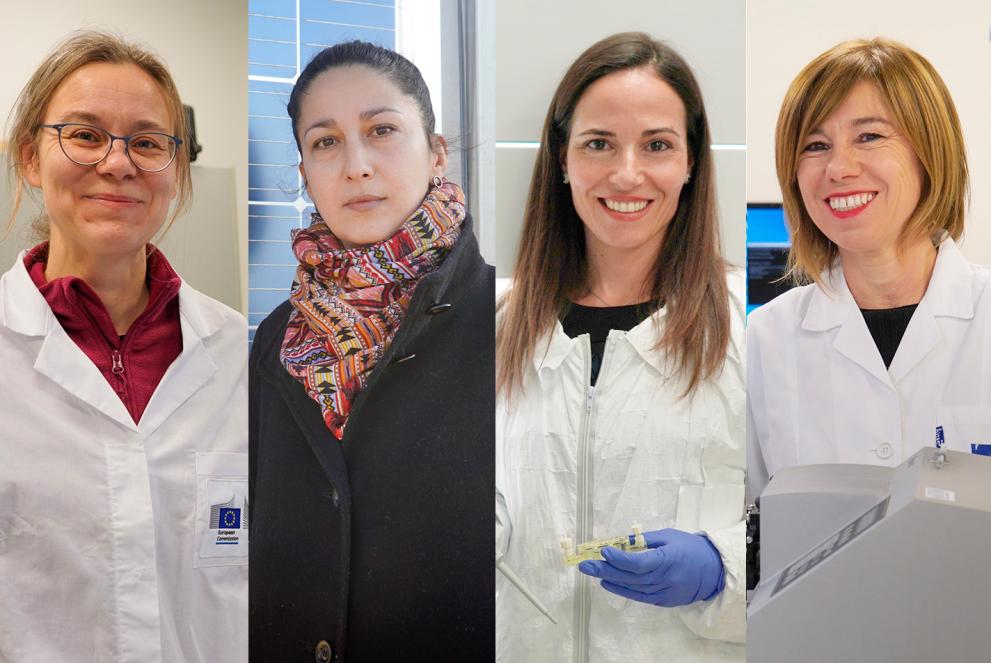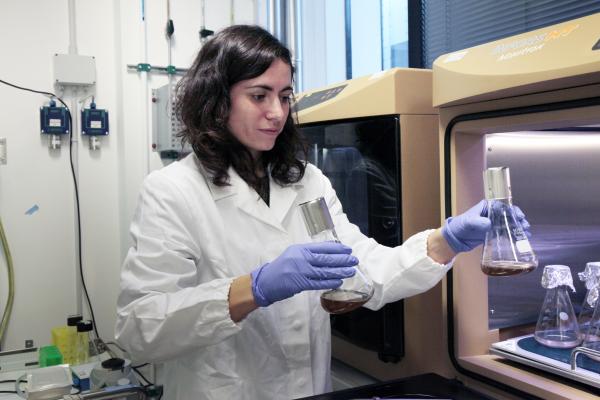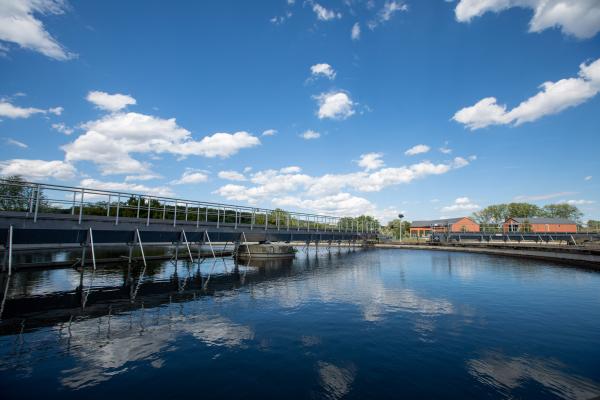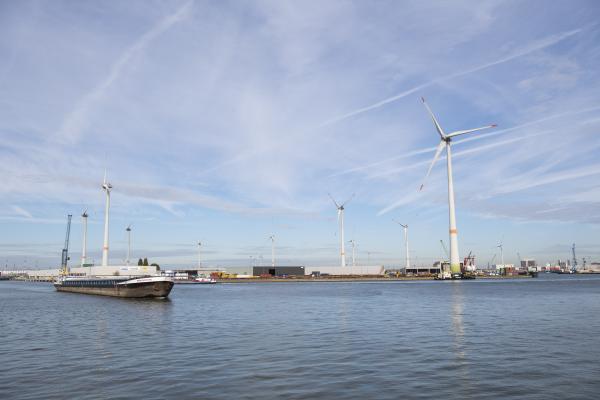
The European Commission is at the forefront of promoting gender equality. Its Joint Research Centre (JRC) is certainly a good example of this, with women in scientific roles accounting for almost 40% of the total in January 2024. The number of female scientists has steadily increased in the last 4 years.
Meet Dora, Ana, Raffaella and Anatoli, four JRC scientists who will guide us through their interdisciplinary fields and show how their research underpins EU policies. Their work at the JRC supports EU policymakers in developing science-based policies that have a positive impact on citizens and society.
Dora Mehn | Ana Ruiz-Moreno | Raffaella Corvi | Anatoli Chatzipanagi
Dora Mehn - Where chemistry meets biology and physics
Dora works on technologies for health. She contributes to the development of a methodology to monitor the amount of microplastics in drinking water. This methodology supports the Drinking Water Directive and will help EU countries measure microplastics in tap water.
Starting from 2024, Dora also leads an exploratory research project called ‘PANGOLIN’, named after the animal who rolls up into a ball using its scales as a shell. Just as pangolins are protected by their scales, nanomedicine products are shielded by a coating that protects the particles. If the protecting layer is defective, the human body could recognise the particles and trigger an unwanted immune response. This exploratory research project aims to develop a method to check the safety of nanomedicine products like vaccines and cancer treatment drugs.
For Dora, working on a research field with medical applications is extremely rewarding. It has a positive impact on global health and is a fast-growing field, which keeps the work stimulating and challenging.
“In our lab, chemistry, biology and physics are strongly intertwined,” she says. “If you want to pursue this career, you must remain receptive to knowledge from all scientific domains and never cease to be curious.”
Related links:
Ana Ruiz-Moreno - Better prepared for health crises with biotechnologies
Ana is a physicist working on biotechnologies for biomedical applications. She analyses, develops and implements technologies to help the EU prepare for new pandemics. Besides improving citizens’ health, this research informs policymakers on technology gaps – for example the lack of real-time, portable and affordable devices for identifying airborne pathogens – and helps them line up preparedness actions.
In particular, Ana works on bio-detection systems to monitor the presence of pathogens in the air. These systems can check the quality of indoor air to help prevent the spread of viruses, which is especially important in pandemics.
Ana is also leading an exciting new exploratory research project to develop 3D bioprinted cellular models to assess the safety of nanomedicines, which are innovative medicines that exploit the power of nanotechnologies. Using 3D bioprinting, Ana and her team aim to create in vitro cell models that reproduce the complex architecture and functionality of human tissues. With these models, they can study how our bodies could respond to different substances. Using the same method with real patients’ own cells will contribute to personalised drug testing and treatment optimisation.
“Biotechnologies open up innovative solutions to health crises. For example, they were used to quickly develop the vaccine for Covid-19”, Ana explains. “At JRC, I feel the science we do has a positive impact on policies and on society. Also, I enjoy working in the multicultural environment of the Commission because it allows me to collaborate not only with research experts, but also doctors, entrepreneurs, policymakers and civil society representatives from all over the world. There I really see that science has no borders.”
Related links:
Raffaella Corvi – Assessing methods for chemical safety
Raffaella is a molecular biologist. With her team, she works on ensuring that the chemicals we are all exposed to are safe. Every day, we are all in contact with chemicals in clothes, food, cosmetics, pharmaceutical products, even in the water we drink. It is, therefore, essential to prove that these chemicals are not toxic.
Raffaella evaluates whether the methods used to assess these chemicals are efficient, standardised and scientifically relevant. Having standardised and validated methods means that they can be used across the EU and beyond, ensuring a uniform approach.
Besides the positive impact on human health, this research also protects the environment, since chemicals can also be found in the water, air and soil and can be toxic, e.g. for bees and fish.
Chemicals have been traditionally tested on animals. Raffaella studies a range of innovative approaches, from methods that use human cells to methods that are computer-based, which can accurately model human biology. These alternative methods are often more reliable and effective than animal testing and, at the same time, protect laboratory animals.
“The JRC is a unique place to work for a scientist: you can see the different stages of your research, from the lab to the regulatory implementation and the impact on society,” Raffaella explains. “You are exposed to different perspectives, which offer you great learning opportunities.”
Related links:
Anatoli Chatzipanagi - Clean energies for sustainable development
Anatoli is a mechanical engineer, specialised in renewable energies and solar photovoltaic panels. She monitors the development and advancement of photovoltaic technology and analyses the EU’s competitiveness in this field.
She also works on an innovative application of photovoltaics, called agrivoltaics, which are solar panels installed on agricultural lands. This is a more sustainable and efficient land use than the traditional ones, since the same land can produce both crops and renewable energy at the same time.
Anatoli helps assess where the agrivoltaics could be installed and their realistic energy production potential, taking into consideration factors such as the location, existing land use as well as nature protection priorities.
This work underpins the EU solar energy strategy and helps the EU reach its solar energy targets. It also supports the EU’s rural development policy.
Anatoli also analyses what is required at regulatory level for such applications. Her research at the JRC clearly shows how science contributes to EU policy.
“In my work, I translate technical analyses into information that contributes to regulations and market assessments”, says Anatoli. “I love that what I do has a concrete and positive effect on our environment and society. I’m glad I followed my dreams without listening to prejudices. Do the same!”
Related links:
Details
- Publication date
- 9 February 2024
- Author
- Joint Research Centre




